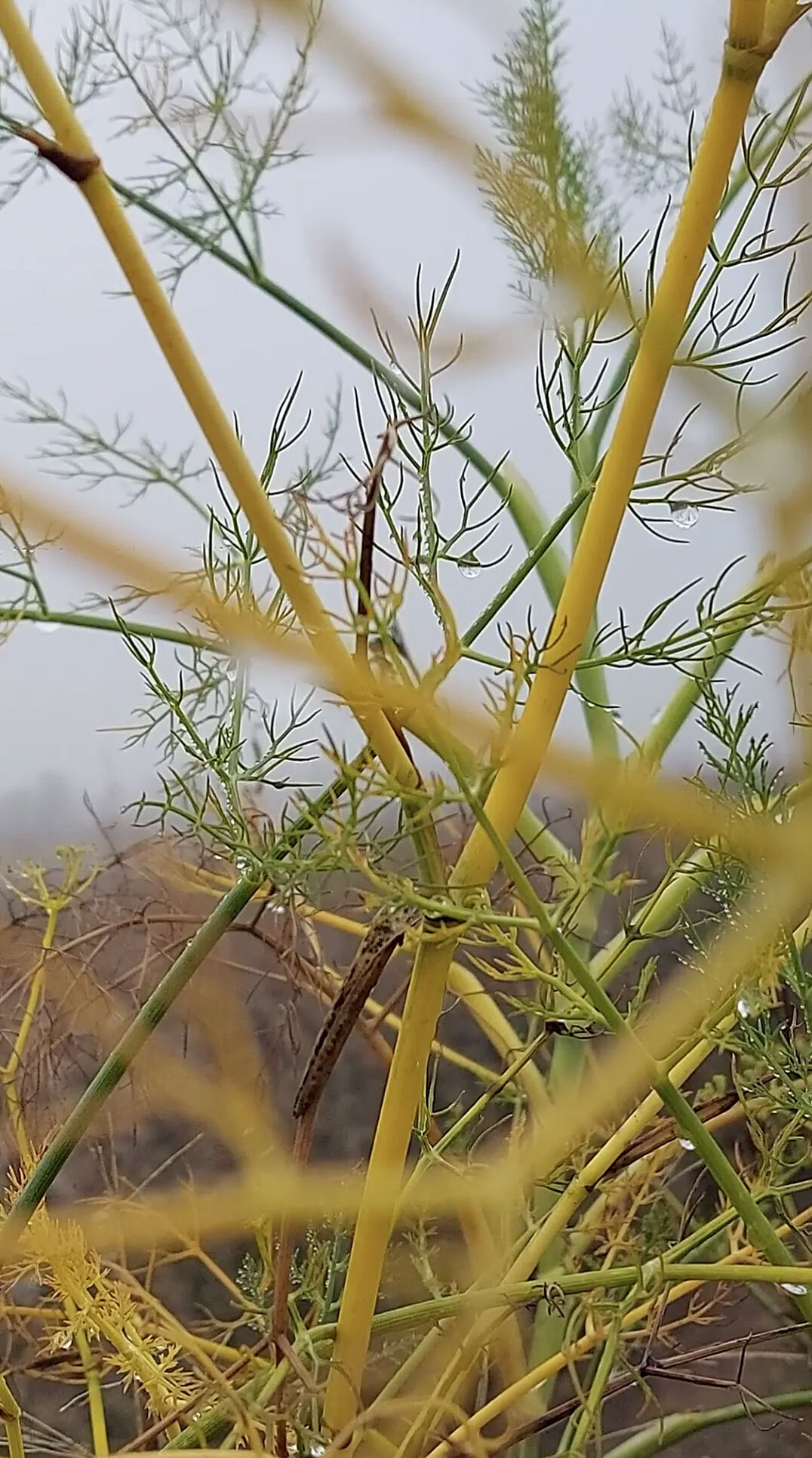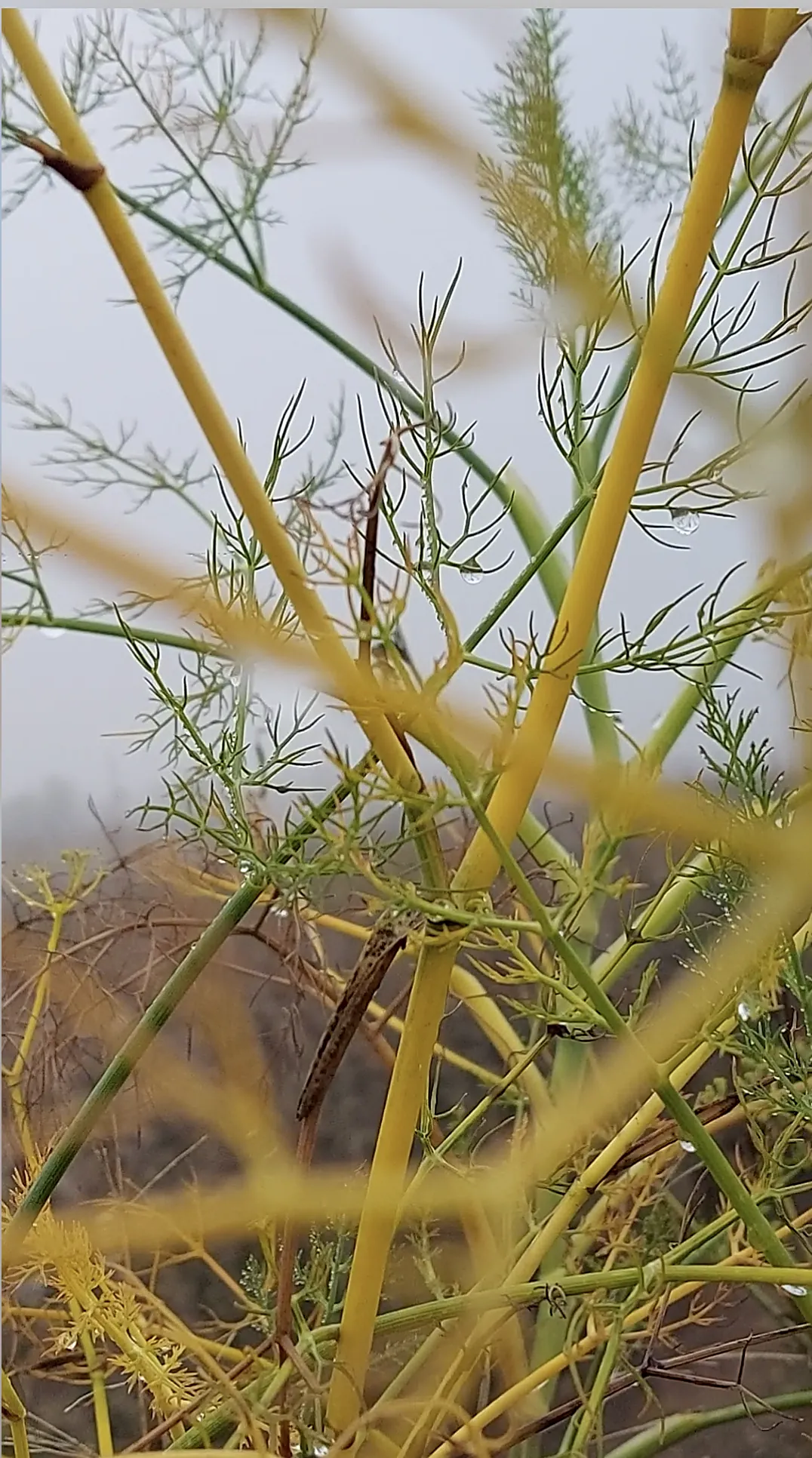
POETICS OF THE WILD AND NARRATIVE OF LIGHT IN ROSA CODINA’S AU PLEIN AIR PHOTOGRAPHY
Santiago Beruete, philosopher
«There is no natural beauty, or more precisely, nature only becomes beautiful in our eyes through the mediation of art»
Alain Roger, Court traité du paysage (A Brief Treatise on Landscape)
In the biblical account, Yahweh expels the mother and father of mankind from the Garden of Eden after they have tasted the forbidden fruit of the tree of knowledge, while issuing the following admonition: “Cursed is the ground for your sake; in toil you shall eat of it all the days of your life. Both thorns and thistles it shall bring forth for you.” The latter are part of an endless list of wild plants, unjustly called weeds, to which also belong dandelion, bindweed, pot marigold, cornflower, poppy, forget-me-not, pimpernel, gentian, mugwort, couch grass, purslane and many others with equally evocative names. Since the beginning of time, the children of Adam and Eve, condemned to earn their living by the sweat of their brow, have waged a particular war against weeds, which compete with their crops, take over their buildings and defy their rigid rules with their unyielding vigour.
We are guilty of anthropocentrism when we label them “weeds”, simply because they interfere with our objectives and are beyond our control. However much effort they may require to eradicate, however little economic value they may have, and no matter how much they mock our pretensions, they do not deserve to be denigrated. Needless to say, wild plants are a prodigy of adaptation and resilience. They possess a unique sense of timing. They take root in the most unlikely places and thrive in the most adverse climatic conditions, accommodating shortages of water, light and nutrients. They flourish without regard or care. This undemanding plant life colonises ditches and roadsides, railways and canals. It stealthily occupies abandoned plots and waste areas in cities. It invades farmland, gardens and parks without asking permission, and thrives in uncultivated soils and in every spot that enjoys human neglect. Weeds are the best example that “nature abhors a vacuum”, as the philosopher Aristotle said. Such obstinacy underwrites the Spanish proverb “weeds never die”. They are also a reminder of our relentless, relentlessly fragile hold on the earth.
The climate crisis has awakened environmental sensitivity and transformed our perception of the wild world. And this growing awareness of the biosphere has sharpened both our nostalgia for the countryside and our sense of vulnerability. Humble flowers, surrounded by a halo of grace in Rosa Codina’s photographs, thus become a symbolic expression of the malaise of a materialistic culture, which is moving further and further away from the rustic purity of its origins. If we fail to change the suicidal trajectory of progress, it will be flowers that will colonise the ruins of our technocapitalist civilisation and take over our world.
Anyone who aspires to be a cultivated person in these times of climate emergency and technological speed would do well to become literally and metaphorically feral. By this I mean not only to look to nature for inspiration and solace, but also to adopt as an ideal of life the humble tenacity and patient audacity displayed by these herbaceous plants, which could be described as vagabonds at best, and as opportunists at worst. We could learn some valuable lessons from them, not least of which is to accommodate to circumstances without giving in to conformism. Wild plants remind us that the key to survival is adaptation, and the key to the latter is creativity. The same could be said of human creations. Genuinely original works are at first perceived as ugly and undesirable, because they break with established canons and contradict our vision of reality.
Codina’s photography, both bucolic and meditative, attempts to capture the breath of the wild landscape during the cycle of the seasons. She uses filters to highlight the chromatic contrasts and the sensuality of plant forms, and to emphasise their power of fascination. It is enough to focus the attention on an insignificant lily, asphodel or bluebell… for it to take on an aspect of infinity. Her images, naïve in appearance and picturesque in spirit, invite us to take solace in the contemplation of poppies, daisies, veronicas, mallows, morning glory, cornflowers, gorse and other seasonal flowers, which dance to the rhythm of the light. Thanks to their ephemeral beauty, we hear the timeless music of nature within us, thus transforming the eye into the ear. In other words, wonder allows us to see the world in high definition.
This photographic gallery narrates the passage of time through the luminous testimony of the wild flora that adorns the countryside. We see how leguminous plants germinate, grasses send up their spears, woody plants flower, annuals dry up and another cycle closes in a never-ending end. This living picture, in permanent metamorphosis, acquires, through the lens of her camera, the character of a visual epiphany. The photographer, as an intermediary, leads us from the plane of the senses to the plane of ideas, from the visible to the invisible. As Johann Wolfgang von Goethe observes in his Theory of Colours (1808): “Every act of seeing leads to consideration, consideration to reflection, reflection to combination. Thus it may be said that in every attentive look on nature we already theorise.” The syntax of her photomontage enhances the semantics of her aesthetic proposal: to recreate the poetic utopia of the wild and to celebrate the joy of the gaze, the concupiscentia oculorum of which the classics spoke. Her photographs invite us to “feast on the ephemeral” and to see, to quote William Blake, “a Heaven in a Wild Flower”. This is a sacred icon and a reflection of the sublime in the ordinary.

BIBLIOGRAPHICAL REFERENCES
ÁBALOS, Iñaki (ed.): Naturaleza y artificio, El ideal pintoresco en la arquitectura y el paisajismo contemporáneos, Editorial Gustavo Gilli, Compendios de Arquitectura Contemporánea, Barcelona, 2009.
BERGER, John: El sentido de la vista, Alianza Forma nº 98, trad. de Pilar Vázquez Álvarez, Madrid, 1990
BODEI, Remo: Paisajes sublimes. El hombre ante la naturaleza salvaje, traducción de María Cóndor, Editorial Siruela, Biblioteca de Ensayo 73 (Serie Mayor), Madrid, 2011.
ČAPEK, Karel: El año del jardinero, trad. de Esteve Serra, José J. de Olañeta, El Barquero, Palma de Mallorca, 2009.
FERNÁNDEZ-QUINTANILLA, César y GONZÁLEZ ANDÚJAR, José Luis: Las malas hierbas, CSIC /Los libros de la Catarata, colección ¿Qué sabemos de…?, Madrid, 2017.
FORTIER, Jean-Martin: El jardinero horticultor, Manual para cultivar con éxito pequeñas huertas biointensivas, trad. de Sidney Flament Ortún y Bruno Macías, Atalanta, Girona, 2020.
GOETHE, Johann Wolfgang: Las metamorfosis de las plantas, edición y fotografías de Gordon L. Miller, Atalanta, Liber Naturae 136, Girona, 2020.
—: Teoría de los colores: las láminas comentadas, trad. de Isabel Hernández González, Gustavo Gili, Barcelona, 2019.
MADERUELO, Javier: El espectáculo del mundo, Una historia cultural del paisaje, Abada Editores, Madrid, 2020.
MARTELLA, Marco: Un pequeño mundo, un mundo perfecto, trad. de Ernesto Hernández Busto, Elba, Barcelona, 2020.
MANCUSO, Stefano: La planta del mundo, trad. de David Paradela López, Galaxia Gutenberg, Barcelona, 2021.
MILANI, Raffaele: El arte del paisaje, ed. y trad. de Federico López Silvestre, Biblioteca Nueva, Colección Paisaje y Teoría, Madrid, 2007
RECASENS, Jordi y CONESA, Josep Antoni: Malas hierbas en plántula, Guía de identificación, Edicions de la Universitat de Lleida, Gran Angular, 2009.
ROGER, Alain: Breve tratado del paisaje (Edición de Javier Maderuelo), Colección Paisaje y Teoría, Biblioteca Nueva, Madrid, 2007.
SACKVILLE-WEST, Vita: Mis flores, trad. de Miguel Cisneros Perales, editorial Gustavo Gili, Barcelona, 2020.
SANTAYANA, George: El sentido de la belleza, trad. de Carmen García Trevijano, Tecnos, Madrid, 1999.
ABOUT THE ESSAYIST
Santiago Beruete has a degree in Anthropology and a PhD in Philosophy. He has lived on the island of Ibiza for more than twenty years, where he combines his teaching and research activities with literary creation. He has written several collections of poems, books of short stories and novels that have won various national and international prizes. His essays Jardinosofía. Una historia filosófica de los jardines (Turner 2016), Verdolatría. La naturaleza nos enseña a ser humanos (Turner 2018) and Aprendívoros. El cultivo de la curiosidad (Turner 2021) have emerged from the happy confluence between his passion for the history of ideas and his own experience as a gardener, and vindicate the value of philosophy and the educational function of the garden in our convulsive times.